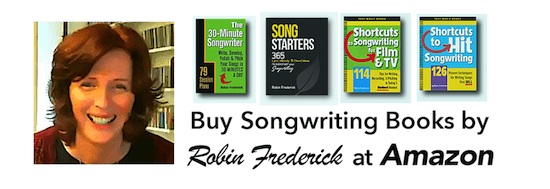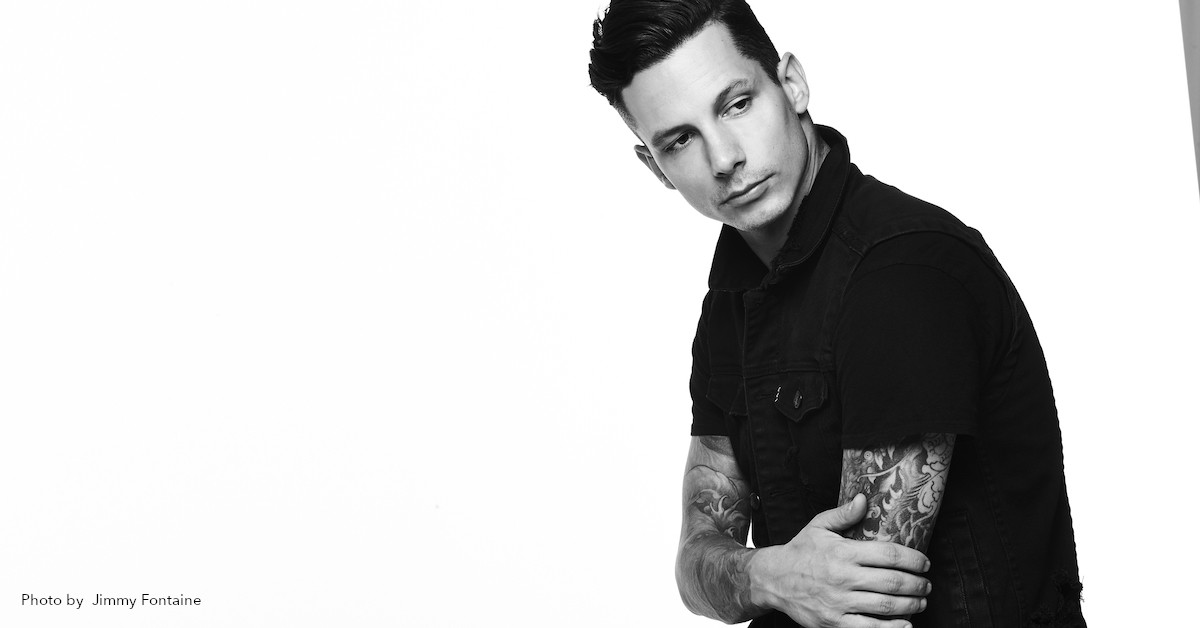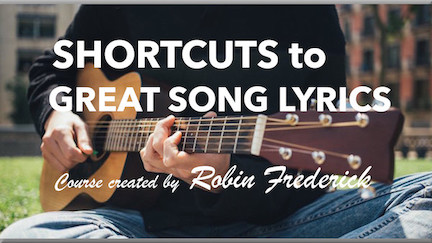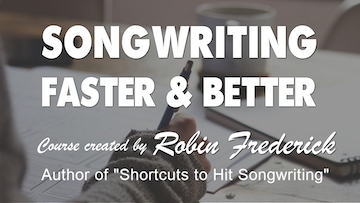“All On Me” is the breakthrough debut single for Country artist Devin Dawson. It zoomed up to #2 on the Nielsen Radio charts, topping 19 million views on YouTube and 95 million listens on Spotify (and still climbing). A remarkable achievement for a single by a brand new artist.
I love digging into songs that propel a brand new artist up the charts. Those artists don’t have a billion fans breathlessly waiting for their next release, guaranteeing it shoots like a rocket straight into the Top Ten. Nope. Their releases have to make it on the strength of the song and performance. It takes an exceptional song with a lot of appeal to make that happen and that’s what makes these songs so much fun to pull apart.
SONG GUIDE
“All On Me” – Devin Dawson
Writers: Devin Dawson, Jacob Robert Durrett, Austin Taylor Smith
TECHNIQUES TO HEAR AND TRY:
- Use a lyric “measuring stick” to express emotion.
- Fresh rhymes are happening in all mainstream genres.
- Create a contemporary melody using phrase patterns.
- Make your hook stand out with a rhythmic melody line.
Listen to the song. Read the lyrics.
Read the lyric here.
Watch on YouTube
GENRE / STYLE
(What is a genre? Watch this video.)
Lyrically, there’s not much that shouts “country” here. No big green tractors, no mention of small town girls or dirt roads. Instead, this song gives Country listeners the kind of relaxed groove, beautifully constructed lyric and melody, and confident, conversational vocal style they like. The theme – “I’m there for you.” – is popular across many genres.
-Try It Now –
Get familiar with the Country genre by listening to songs that are currently popular in that genre. You can check out songs in any genre on your favorite stream-on-demand service like Spotify, Apple Music, or Amazon Unlimited.
Here’s a blog post with a list of questions that will help you get familiar with a song genre.
SONG STRUCTURE
“All On Me” features a common Verse/Chorus structure with a short two-line pre-chorus.
VERSE / PRE-CHORUS / CHORUS
VERSE / PRE-CHORUS / CHORUS
BRIDGE / CHORUS / INSTRUMENTAL WITH VOCAL HOOK.
INTRO: There’s a four-bar (10 second) intro that sets up the groove, gets listeners into the mood of the song, and then delivers them right to the vocal without wasting time.
VERSE 1: Begins with “Yeah, I know that the woes and the weight of the world…”
VERSE 2: Starts with the line “Wanna take you out on the town…”
PRE-CHORUS: The pre-choruses are short two-line phrases that set up the chorus melody and lyric just the way a pre-chorus should.
Pre-chorus 1:
But if you ever feel that way
Don’t you ever hesitate
Pre-chorus 2:
Girl you know I’m here for you
You can lean on me anytime you need to
This a good length for a pre-chorus. Long enough to work as a pick up to the chorus and short enough to keep the song’s momentum going. Notice that Pre-chorus 2 features a longer second line that leads the listener right up to the first word of the chorus.
CHORUS: The chorus lyric, beginning with “You got my number…,” is completely focused on the core idea at the heart of the song: I’m there for you.
This chorus is long (10 lines) and the melody stays within a limited note range. Notice how the songwriters played with the rhythm of the notes and ran one line into the next to maintain interest and keep the momentum going.
BRIDGE (2:17): The bridge is a hybrid, consisting of four bars of instrumental, and then four bars of vocal. The chords are from the verse but the lyric and melody are similar to the chorus with some variation.
-Try It Now –
Listen to the song or watch the video and notice the song structure. Print out the lyrics and read them as you listen. Mark the song sections on the lyric page.

LYRICS
In this lyric, Devin Dawson is talking to someone in a direct, believable way. The language is conversational with only a couple of words that don’t come up in everyday conversation (“woes and weight of the world”). So, how do they keep the lyric interesting? I mean, everyday conversation is not exactly riveting most of the time.
Use a measuring stick

The phrase “I love you” doesn’t mean much without a context to put it in. You can sing those words a million times and listeners still won’t feel them. You have to say something about love that brings the feeling to life for the listener: How much do you love? What would you do for love? How does love make you feel?
A “measuring stick” is a way of expressing love (or any emotion) by showing what you are willing to do for it: I would climb a mountain for you, swim the sea, slay a dragon, eat Pringles, etc.
In “All On Me,” the lyric takes a different approach to the measuring stick. The singer tells his love what he encourages her to do, and assures her that he will be there no matter what.
…you can call on me
If you’re in trouble put the fall on me
When you’re mad you can take it out on me
When it don’t add up you can count on me
When you’re low come get high on me
Make it slow take your time on me
Said let, let it out, come and lay on me
When it gets heavy put the weight on me
Baby put it all on me
In the bridge, he takes this idea a big step further when he says “you can bet your life on me,” adding some serious yardage to the measuring stick.
Why do it?
Using the measuring stick approach allows you to add ACTION to your lyric. So, maybe it’s not slaying a dragon but lines like these:
“If night falls in your heart I’d start a fire” (Banners),
“If you fall like a statue I’ll be there to catch you” (Phillip Phillips)
“I will be loving you until we’re 70” (Ed Sheeran)
…are all actions that express what the singer would do, will do, or is doing. It gives listeners something they can picture and a measure of the intensity of the singer’s feelings.
-Try It Now –
Make a list of “measuring stick” phrases. What would you do for love? What are you giving up to realize a dream? What will you do to get revenge? Start a lyric using one or more of those phrases.
Creative Rhyming
Near rhymes (vowel-only rhymes) are on full display in this lyric. Plus, there are rhymes popping up in all kinds of unexpected places, while in the places you’d expect, they don’t show up at all.
In the chorus, for example, every line ends with the same two words: “on me.” Of course, it’s not a rhyme when you use the same word. Instead, the rhymes are the words that precede “on me”: “call/fall,” “out/count,” “high/time,” “lay/weight.”
Look closer. Within those same lines we see another set of internal rhymes: “number/trouble,” “mad/add,” “low/slow,” “out/put.”
The mix of perfect rhymes like “mad/add” and looser rhymes like “number/trouble” has crept in from the Hip-Hop genre and taken up residence in Country, Pop, Rock, R&B, Folk and most other styles. It has become more or less accepted practice now. It’s your choice how much of it you want to use and whether you feel it’s appropriate.
-Try It Now –
Having trouble with rhymes? Take a look at a few recent hit songs in your genre. Note the rhyming patterns and types of rhymes that are used. Start a list of fresh rhymes you like and might use.
MELODY
The melody in the verse and chorus are in the same note range which could easily result in a wandering, monotonous song, with all the sections sounding the same. The chorus adds a vocal harmony, giving it a bit of a lift, but not enough to make a big difference. Instead, contrast between sections is created with the patterns of phrase lengths in the melody.
Phrase length patterns
VERSES: The verses feature an interesting pattern of line lengths. The first line is extremely long, almost as if the songwriters are stretching it out. It keeps going and going and going.
Yeah, I know that the woes and the weight of the world can get inside our minds
This is followed by a shorter phrase, the last two words of which could even be a very short phrase on their own.
And be too much sometimes, I know.
This entire pattern is then repeated before going to a short, two-line pre-chorus that rises just a little bit before dropping into the chorus.
CHORUS: Most of the chorus phrases are a similar, medium length. Not at all like the extreme variations in length we heard in the verse.
These phrases also seem to run into each other and pauses occur where we don’t expect them. Again, this is a very different phrase pattern than we heard in the verse.
By playing with phrase lengths and pauses, the chorus melody provides plenty of contrast with the verse.
PAYOFF LINES: The final line of the chorus, sometimes called the “payoff” line, is one that listeners will remember, especially if you give it an extra push in their direction like this one does.
After the series of similar lines, the final line – Baby, put it all on me. Put it all on me. – is short, rhythmically catchy, and has a long pause in the middle. It’s so different from what led up to it, that listeners can’t help but notice it.
-Try It Now –
Pick a hit song you like and notice the pattern of long and short phrases. Then take a look at the difference in phrase lengths between different sections. Use these phrase patterns to inspire a melody of your own. You can stick close to the phrase lengths of the original song or just use them as a jumping off point.
CHORDS
While this isn’t strictly speaking a four-chord song, it does rely on simple chord progressions with plenty of repetition in each section. There’s a little change-up in the pre-chorus and a turnaround at the end of chorus that adds strength to the transitions, but it’s nothing you haven’t heard before.
Devin Dawson – “All On Me” Chords & Lyrics here.
PRODUCTION
The production of “All On Me” serves up some great ideas for building a song on a drum groove. The first verse showcases the drum track. There’s very sparse instrumentation, just a little bass and electric guitar, to fill out the chords. The vocal is right up front, weaving in and out of the groove.
A smooth electric piano comes in on the pre-chorus as the other instruments drop out. It feels as if the track holds its breath for a moment. Then everything drops back in, releasing the breath at the top of the chorus. Notice how the electric guitars add energy and the electric piano creates a pad that fills space for a full, rich sound.
Check out the Hammond organ the enters just before Verse 2 and notice the extra layers of electric guitar as the song develops.
There are only a few different instruments on the track – drums, bass, ’70s keyboards (Rhodes/Hammond), and electric guitars that blend well with each other. There’s some additional percussion sweetening toward the end but that’s all.
Keep a tight focus in your production
A successful production has a unified feel. You don’t need to record that instrument called “everything-but-the-kitchen-sink.” Try using instruments from a similar time period or feature an all-acoustic or all-synthesizer sound, and then add as needed.
Think of your instrument choices literally as a painter’s palette. You wouldn’t mix neon pink with muted natural tones. This doesn’t mean you can’t experiment with putting sounds together but keep it on a leash or have a good reason for doing it.
-Try It Now –
START WITH THE GROOVE. The drum kit in this production is very dry (hardly any reverb) and has a nice steady, repetitive feel plus fills. Check out the following resources for drums and see if you can create a similar track. Add a chord progression on guitar or keyboard, and then write a lyric and melody that will work with it.
Karaoke-version.com (Buy drum-only tracks.)
GrooveMonkee.com (Midi drum tracks.)
EZdrummer or use the drum plugin in your DAW.


